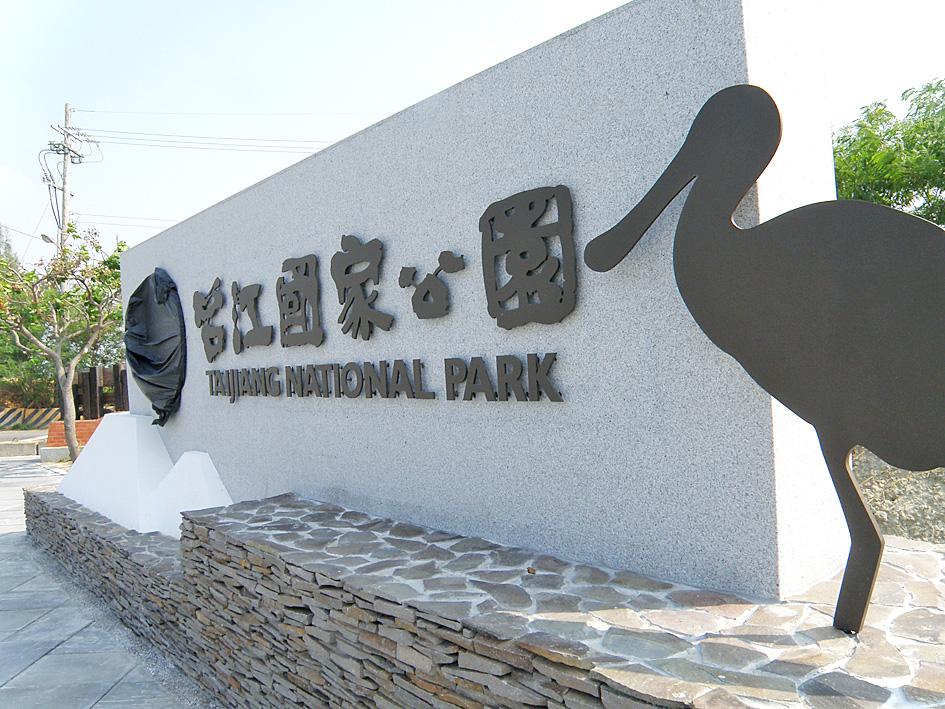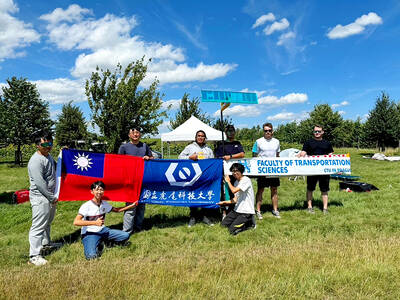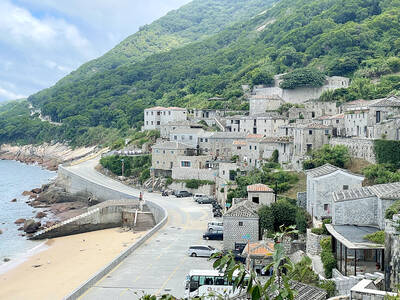The number of visitors to national parks in the first eight months of the year has fallen nearly 20 percent, except at Taijiang National Park in Tainan, which recorded an increase, Ministry of the Interior data showed.
From January to August, 11,921,955 people visited the nine national parks, down 19.95 percent compared with the same period last year, ministry data showed.
The number of visitors to Kinmen National Park declined the most, falling by 50.44 percent, followed by a 47.85 percent drop at Dongsha Atoll National Park and a 46.59 percent decrease at Kenting National Park, the data showed.

Photo: Tsai Wen-chu, Taipei Times
The overall decrease could be attributed to the COVID-19 pandemic, as the data showed that more than 1.58 million people visited national parks in January, 200,000 more than in the same month last year, the ministry said.
After the disease broke out in February, the number of visitors started to plunge, with April and May recording only half of last year’s level for the same period, the data showed.
Visitor numbers started to go back up in June, as the nation’s disease situation stabilized, with 200,000 more people visiting parks in August than in the same month last year, showing that confidence in domestic travel had returned, the data showed.
However, Taijiang National Park, Yushan National Park and South Penghu Marine National Park appeared to be unaffected by the effects of the pandemic and saw a growing number of visitors.
Taijiang National Park recorded 977,602 visitors in the first eight months of the year, a 164.74 percent increase over the same period last year, with the number of visitors in each of the months higher than those of last year, ministry data showed.
Meanwhile, the numbers of visitors to South Penghu Marine National Park and Yushan National Park increased by 39.57 percent and 37.01 percent respectively, the data showed.
The rise in visitors to Taijiang might have been due to the exotic design of its new visitors’ center, which has attracted many people to share photographs of it on social media after its inauguration last year, Construction and Planning Agency section head Chang Wei-chuan (張維銓) said yesterday.
Yushan National Park also recorded more visitors after a section of road from the Southern Cross-Island Highway to Tianchi (天池) reopened in January following decade-long repairs from damage caused by Typhoon Morakot, Chang said.
Due to limited transportation options and colder weather, visitors to South Penghu Marine National Park were initially fewer than other locations on Taiwan proper, he said.
However, with overseas travel restricted, more people opted to visit Penghu to “pretend to go abroad,” he added.

The Chinese military has built landing bridge ships designed to expand its amphibious options for a potential assault on Taiwan, but their combat effectiveness is limited due to their high vulnerability, a defense expert said in an analysis published on Monday. Shen Ming-shih (沈明室), a research fellow at the Institute for National Defense and Security Research, said that the deployment of such vessels as part of the Chinese People’s Liberation Army (PLA) Navy’s East Sea Fleet signals a strong focus on Taiwan. However, the ships are highly vulnerable to precision strikes, which means they could be destroyed before they achieve their intended

The Taiwan Experience Education Program (TEEP) has funded short-term internships in Taiwan for more than 4,500 young people from more than 40 countries since 2015, with the goal of attracting and retaining international talent, the Ministry of Education said yesterday. Fifty-five colleges launched 514 projects this year, including in fields such as semiconductors, artificial intelligence, medicine and biotechnology, green energy, and sustainability, it said. The program provides research and practical internships in Taiwan for two to six months, and offers cultural exchange and networking opportunities, the ministry said. For example, National Formosa University’s Embedded System and Autopilot Laboratory developed two solar-powered drones in

GLOBAL: Although Matsu has limited capacity for large numbers of domestic tourists, it would be a great high-end destination for international travelers, an official said Lienchiang County’s (Matsu) unique landscape and Cold War history give it great potential to be marketed as a destination for international travelers, Tourism Administration Director General Chen Yu-hsiu (陳玉秀) said at the weekend. Tourism officials traveled to the outlying island for the Matsu Biennial, an art festival that started on Friday to celebrate Matsu’s culture, history and landscape. Travelers to Matsu, which lies about 190km northwest of Taipei, must fly or take the state-run New Taima passenger ship. However, flights are often canceled during fog season from April to June. Chen spoke about her vision to promote Matsu as a tourist attraction in

Taipei resident Mu Chu-hua caught some glimpses of China’s mighty military parade on YouTube on Wednesday. As she watched hypersonic missiles roll down Beijing’s Changan Avenue and troops march in lockstep, she did not feel like they posed a threat to Taiwan. Mu, a 69-year-old retiree, said she saw the parade as simply a way for Chinese President Xi Jinping (習近平) to “say thank you to the troops.” “I thought it was quite normal,” she said. “It was very cool.” China’s military parade commemorating the end of World War II was being watched internationally for insights into Beijing’s military advances and its show